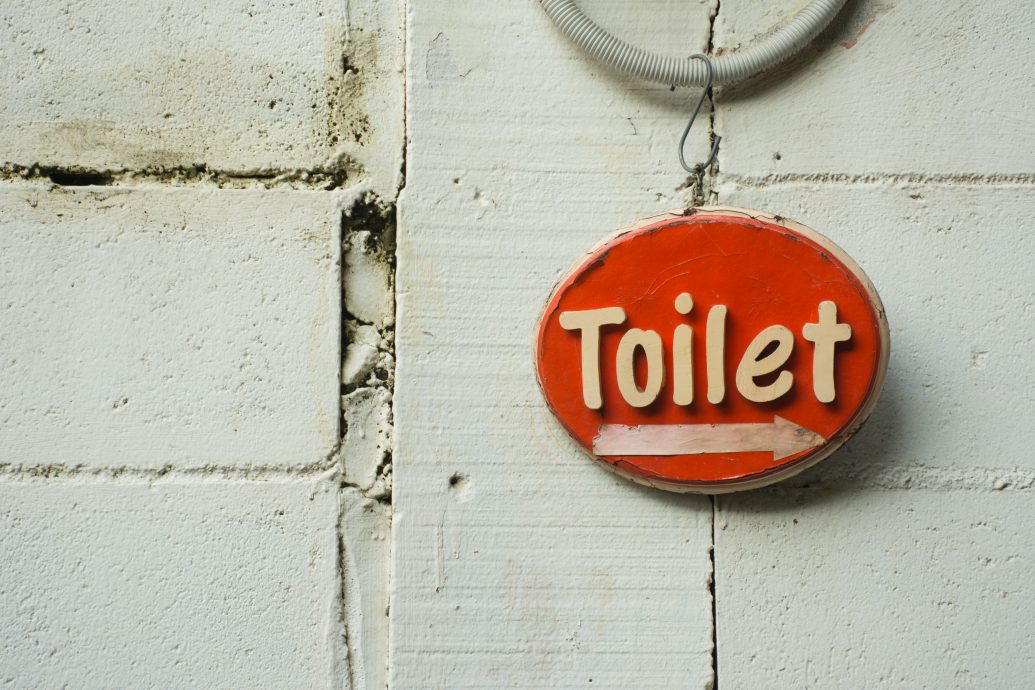The dematerializing nature of the world can be a boon to the middling classes, and the sharing economy provides an example of this.
Thinking about Property Rights Can Solve This
The public debate in America over access to public restrooms by transgendered people has largely been dominated by vague claims for morality, justice and fairness. The situation was further complicated by the Justice Department’s decision to send a Mafioso-style letter to public school districts to adopt policies allowing transgendered individuals to use bathrooms of their choosing or lose federal funding. It’s a deal they shouldn’t refuse. However, I think this discussion might be better understood if we focused exclusively on property rights.
Private and public institutions bear the cost of constructing and maintaining public restrooms, either by law or by choice. (The shop where I buy wine, for example, needs a restroom for its employees, and makes it easily available to customers—it’s for one person, the so-called “unisex” kind.) Building codes and other governmental regulations require that larger buildings include public bathroom facilities. Restaurants, schools, sports stadiums, office buildings, and of course homes, are all required by local codes to have a certain number of bathrooms available.
But it’s important to remember that during the first 100 years of American history, there were no codes or laws about plumbing or bathrooms. This was not because America was a libertarian paradise free from burdensome regulation and oversight. It’s because America, like the rest of the world, was a smelly, backward place lacking in indoor plumbing and bathrooms.
Robert Gordon’s voluminous new book, The Rise and Fall of American Growth, outlines the technological revolution that swept across the United States between 1870 and 1940. Electricity, central heating, telephones, and of course indoor plumbing were among the spectacular life enhancements that reached Americans during that period. Life was essentially transformed from a dark, cold, disconnected, and unsanitary existence to one with light available on demand, heat and air-conditioning to regulate interior climate (even for farmers driving tractors in the fields), phones to call friends and family, and most importantly, from a health perspective, clean running water and indoor bathrooms.
It’s hard to imagine today, but even as late as the 1940s much of the American South did not have indoor plumbing, and between 1870 and 1940, neither did most of the rest of the country. For cooking and cleaning, water had to be physically carried in and out of the house, usually by women. Americans used chamber pots, back yards, or an “outdoor privy” (in common terminology, an outhouse) instead of running water toilets. These were not invented until 1875, and even then it took decades for most of the country and world to incorporate them into new and existing structures.
By 1940, most of urban America had indoor plumbing. Thus it was only early in the 20th century in America that we faced the question of how publicly available toilet facilities should be organized and maintained. Europe had begun providing public restrooms sooner, but the question of gender-specific facilities was initially not important for two reasons: cost and social expectations. Adding a toilet, particularly when it was a relatively new technology, wasn’t cheap. Additionally, women typically did not work outside the home nor were they welcome in bars or taverns in American cities prior to World War II. Public facilities were largely geared toward males.
Of course today, the cost of providing public restrooms is largely borne by the owners of buildings in the United States. At your home you pay for the construction of the bathroom as well as the plumbing fixtures, toilet, paper, paint, air freshener, hand soap, towels, and the mirror over the sink. If you have guests, you don’t ask them to pay for its use. The same is largely true in commercial or public facilities. Clearly part of the cost of building and maintaining a bathroom is incorporated into, say, the ticket you bought to get into a movie theatre, sporting event, or concert. The dollars and cents you pay for a meal at a restaurant will be used at least in part for the upkeep of the bathroom facilities. Much like building a parking lot, separate-sex restrooms are part of the cost of doing business.
All of this brings me to the economist and law professor Ronald Coase, who was awarded the Nobel Prize in 1991 for his work on problems related to “social cost.” As most students of economics know, the famous paper on social cost by Coase (1910-2013) helps us understand how we can deal with what economists call “externalities.”
Externalities are things that affect us through the actions of others. If your neighbor plays loud music throughout the night and you can’t sleep, you are bearing the cost of his or her decision to play the music. That’s what is called a negative externality. If your neighbor has a large screen television and is watching a movie that you can watch through her window without paying her, you gain a benefit. That’s a positive externality. Pollution is one of the more well-known examples of a negative externality.
Another economist, Arthur Cecil Pigou (1877-1959), argued that taxes were an appropriate way to address externality problems. Those producing the externality would be taxed so that they bore the cost of their activities. To be sure, deciding the real cost of an externality is no small feat. Others have argued that governmentally enforced regulations are the best way to deal with externalities.
Coase took a much different approach, one more consistent with free markets. He argued that in a world with clearly defined property rights and zero transaction costs, individuals could negotiate a resolution to the externality problems so as to allocate society’s resources according to the use that is of the highest value. If we had clear property rights and low transaction costs, we could resolve the downstream pollution you are spilling into the river that passes in front of my house. If I valued the smell and appearance of the river more than you valued dumping, I could pay you to stop, or you could pay me to keep the effluvia running.
So how are disputes over public restrooms an externalities problem? One position seems to be that only biologically born men have the right to use a men’s room in a public facility. The other position appears to be that gender is selected and not determined at birth. Both sides believe they are at risk of bearing a negative externality. Both believe themselves to be bearing the costs of the actions of others.
Do biological gender-determined bathrooms create negative externalities for those who wish to use the restroom of their chosen rather than biological gender? Or does the use of gender-determined bathrooms by transgendered people create a negative externality for those of us who identify as being of the gender in which we were born? Amnesty International claims that unisex bathrooms are a risk factor for sexual assault among young girls. Conversely, transgendered individuals argue that forcing them to use the restroom of their biological gender puts them at risk for harassment and violence. Both sides see a potential negative externality.
Now we must turn to the issue of transaction costs. What would be the costs of negotiating an arrangement for restrooms based on highest-value use? One side of the debate seems to assume that transgendered individuals have a right to use the restroom of the gender with which they identify regardless of any ownership rights or potential externalities they might impose on others who oppose such use. The argument seems to be, for example, that rather than addressing who “owns” the toilet, I and potentially every other male in society are given rights to use a men’s room. The same would be true of women for women’s restrooms.
Coase’s position would be to first establish ownership. Rather than focusing on who has the “right” to use the restroom a bathroom, Coase would ask “Who owns the restroom?” It almost seems as if those claiming that restroom use is a right are assuming that ownership either doesn’t exist or is irrelevant here.
It seems to me that such a position is ultimately problematic. In practice, private owners “discriminate” all the time when it comes to bathroom access. Gas stations frequently have signs that tell individuals that toilets are only for use by patrons. Some go so far as to require keys to use the restrooms. The reason for this is simple: Toilet use by non-patrons raises the costs to the gas station. Station owners do not wish to pass those higher costs on to their clients.
Of course, not all buildings are privately owned. Some are built and maintained by governments, be they local, state, or national. Whether or not they are owned by the government, one can see clearly that public schools, libraries, police stations, courthouses, government administrative buildings, publicly funded stadiums, even animal-control facilities do not necessarily fit the Coasean framework because they are not owned in the same sense as private buildings are.
Regarding the North Carolina law, it seems to me that using the coercive power of governmental regulation or legislation to solve this problem is probably sub-optimal. However, the North Carolina law does include an acknowledgement of a robust regime of private property rights. In fact it divides restrooms into those privately owned and those in public/government buildings. And the law says that use of the restrooms in government-maintained structures, which are paid for at public expense, would be decided by the level of government that bears the costs of providing that restroom.
In the case of private buildings, the owners of those buildings possess the property rights to dictate who has access to their toilets. With private ownership, the Coasean solution can now be applied. The owners of private buildings can now “negotiate” with individuals to determine how the bathrooms are used. The law lowers the transaction costs and clarifies property rights. Office buildings, private shops, malls, restaurants, for example could all decide how they wanted to make available their individual restrooms. Let those who bear the costs of providing a toilet decide how those toilets are used.
The U.S. Department of Justice asserts that the Civil Rights Act of 1964 applies here. It certainly seems likely that such an issue would inevitably be sent to the Supreme Court, which in its current composition would at least be somewhat sympathetic to overturning the North Carolina law. But the justices should at least strongly consider how important it is to protect the rights of property owners.
History ultimately decides who is “right” on these sorts of issues, but we would be well served to first acknowledge and respect the deeply rooted principles of private property before we try to tackle more complicated ones such as how to cope with the emergence of transgendered people in public discourse.



